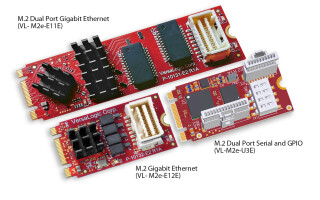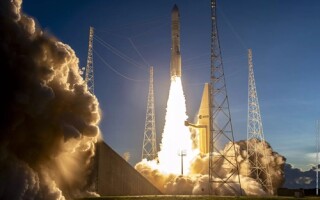Ready or not, the quantum computing revolution is here
StoryMarch 20, 2018
A National Science Foundation (NSF) expedition project it calls "Enabling Practical-Scale Quantum Computing" (EPiQC) aims to bridge the gap between quantum designs currently in use and the algorithms necessary to fully embrace their power.
A National Science Foundation (NSF) expedition project it calls “Enabling Practical-Scale Quantum Computing” (EPiQC) aims to bridge the gap between quantum designs currently in use and the algorithms necessary to fully embrace their power.
In an effort to help accelerate the potential of quantum computing, NSF recently launched EPiQC, a $10 million expedition into quantum computing. The project is led by the University of Chicago, which is bringing together experts in algorithms, software, and computer architecture from MIT, Princeton, Georgia Tech, and the University of California, Santa Barbara.
Quantum machines may soon be capable of performing complex computations that can advance artificial intelligence, computer security, chemistry, and other fields in ways that are extremely difficult or beyond the scope of today’s computers.
IBM, Intel, and Google all recently unveiled new quantum computing prototypes approaching 50 quantum bits (qubits) – a qubit is a single bit of quantum information – a milestone in the quest to create machines capable of producing unprecedented discoveries.
Despite these advances, there remains a huge gap between the quantum designs currently in use and the algorithms necessary to make full use of their power. The EPiQC project will tackle this portion of the puzzle.
To do this, the researchers will focus on developing new algorithms and software and hardware designs tailored to key properties of quantum technologies that are capable of 100 to 1,000 qubits.
“We want to close the gap enough that we can do something about these promising machines,” says Frederic Chong, Seymour Goodman professor in the Department of Computer Science at the University of Chicago and lead investigator on EPiQC.
EPiQC will work developing these elements together to take full advantage of new quantum machines. Importantly, the collaboration will also involve partners from industry and other universities to form a consortium that can share research ideas and new tools as they are developed.
“Without a coordinated effort such as EPiQC, these computers will come out and no one will be able to program them and they’ll need a much larger machine to do the computation they want to do,” notes Diana Franklin, director of Computer Science Education at University of Chicago STEM Education and a research associate professor at the university.
How does quantum computing work? Its basic premise is that qubits can occupy the superposition of states, rather than the binary 1 or 0 of classical computing bits. This means that each additional qubit doubles the computing power of a machine and produces exponential gains. Scientists could use these machines to run simulations and solve equations too complex for classical computers – and possibly reveal breakthroughs in cryptography, transportation optimization, and many other fields.
Many algorithms designed so far to exploit quantum advantages require the use of much more powerful machines than will be available in the near term. Scientists also lack the software needed to adapt these algorithms for practical use on actual machines, as well as the infrastructure tools needed for programming these new technologies.
“The big missing piece in quantum computing is what we can do with it that’s useful,” Chong says. “We want to think about it in very practical terms. What happens when you have a small number of devices, you can only run them for a short amount of time, and you have noise and errors? Will the algorithms work then, and how can we change them to make them work better? And how can we change the machine to make the algorithms work better?”
EPiQC will play “an essential role in researching efficient codesign of algorithms, software and devices, as well as creating tools to put quantum in front of a wider audience for even greater quantum programming creativity, and eventual breakthrough quantum applications,” says Jay Gambetta, manager of Quantum Information and Computing at IBM Research, which offers a hands-on quantum computing experience with its 5- and 16-qubit IBM Q Experience devices and QISKit software framework. “EPiQC will also develop curricula to help train a much-needed workforce to drive quantum computing forward.”
Overall, EPiQC’s goal is not only to produce tools, educate people, and grow the community, “but also to help people appreciate the important problems to be solved here and inspire people to work on them,” Chong says.
Figure 1: Quantum computers require temperatures near absolute zero to operate, a condition that can be created by a dilution refrigerator. Photo credit: Nate Earnest/David Schuster Laboratory.






